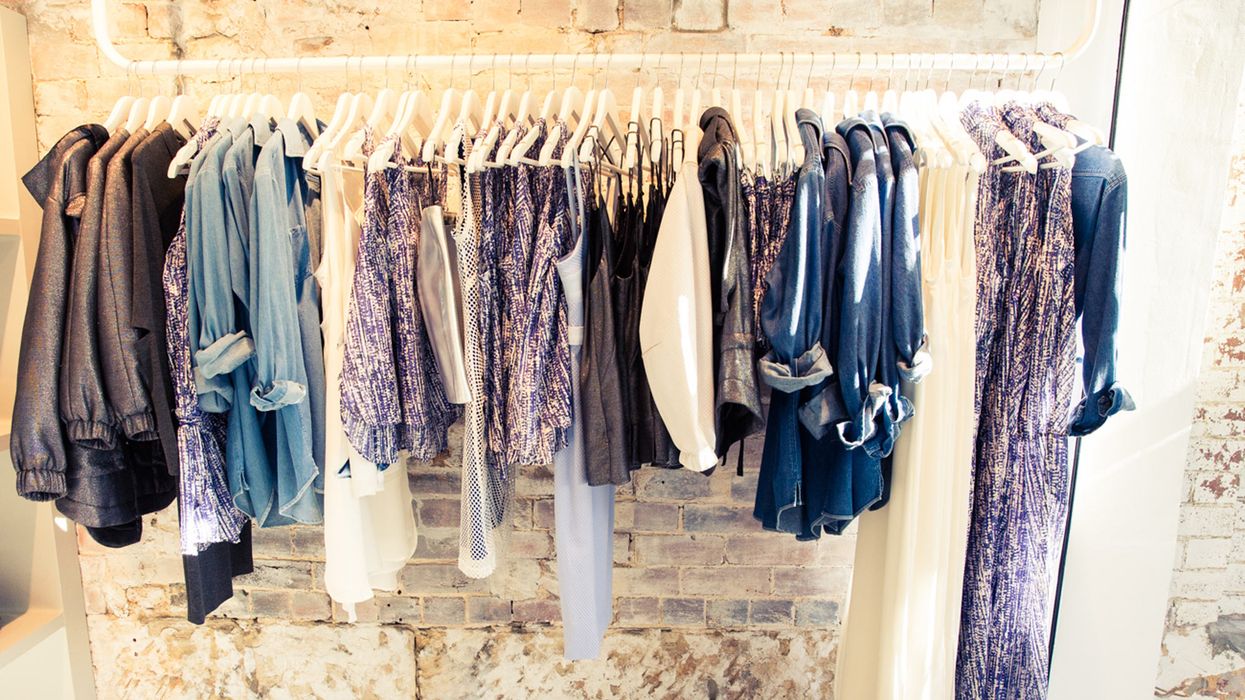Raise Your Wardrobe with Spectacular Boutique Fashion Essentials
Raise Your Wardrobe with Spectacular Boutique Fashion Essentials
Blog Article
Exploring the Evolution and Influence of Garments on Modern Fashion Trends
The advancement of apparel has actually dramatically influenced modern style trends, merging historical precedents with sophisticated technologies. Iconic figures like Coco Chanel and Yves Saint Laurent transformed the style sector by introducing principles that prioritize convenience and availability, which remain to reverberate today. On the other hand, technical strides in areas such as 3D printing and clever textiles are redefining design possibilities and customer experiences. Furthermore, the expanding focus on inclusivity and sustainability is reshaping industry requirements. As we take into consideration these multifaceted impacts, one have to doubt how these elements collectively redefine style's function in showing and forming contemporary society.
Historical Fashion Influencers
In the tapestry of style history, specific numbers have left an indelible mark, forming the fads and designs that specify entire periods. Coco Chanel, a revolutionary designer, redefined women's fashion by introducing comfortable, classy garments that departed from limiting bodices. Her legendary Chanel suit and little black dress have ended up being classic staples in closets worldwide. Christian Dior's post-war "New Look" in 1947, with its party of femininity via full skirts and cinched waists, marked a return to opulence and has continued to influence designers.
Elsa Schiaparelli is an additional crucial figure, renowned for her avant-garde styles that included surrealist art, teaming up with Salvador Dalí to produce wayward pieces that challenged traditional appearances. Her cutting-edge use shade and strong patterns resounds in contemporary style. Yves Saint Laurent, on the other hand, equalized high fashion with prêt-à-porter collections, bringing path styles to the masses and setting a criterion for contemporary ready-to-wear lines.
These enthusiasts, to name a few, not just reinvented style in their times yet additionally established withstanding patterns that resonate in today's fashion business, supplying a foundation whereupon modern designers remain to develop and innovate. Their heritages emphasize the significance of creative thinking and bold in vogue's ever-evolving narrative.
Technical Improvements in Fashion
In the middle of the vibrant landscape of the fashion market, technical advancements stand at the leading edge of development, improving how designers create and customers involve with fashion. The combination of 3D printing has revolutionized design processes, enabling developers to explore intricate frameworks and sustainable materials that were formerly inconceivable. This technology helps with quick prototyping, minimizing waste and accelerating production times.

Smart fabrics, installing modern technology right into fabrics, are also transforming the industry. Advancements like self-cleaning and temperature-regulating textiles provide boosted functionality and convenience. Wearable modern technology, incorporating functions like physical fitness monitoring and interaction, adds a new measurement to fashion, merging appearances with usefulness.
Cultural Shifts and Design
As technical advancements remain to improve the fashion sector, social shifts are similarly influential, redefining style and consumer choices. In recent times, the surge of social networks platforms has accelerated the circulation of worldwide style trends, enabling varied social influences to converge and exist side-by-side. This electronic interconnectivity has promoted the fast exchange of ideas, bring about see it here a more diverse and inclusive analysis of style that reflects the diverse nature of contemporary culture.
Social recognition and recognition have actually prompted developers to draw motivation from a wider spectrum of historical and ethnic contexts, integrating standard motifs with contemporary appearances. This fusion has resulted in fashion that resonates with a wider target market, promoting a sense of identification and belonging throughout different demographics. In addition, the enhancing need for personalization has actually driven brand names to offer customizable options, allowing consumers to share uniqueness while showing their cultural heritage.
Furthermore, moving social values have actually impacted fashion, with inclusivity and variety coming to be central motifs. The industry has actually begun to welcome designs and influencers of numerous body types, ethnic cultures, and gender identities, difficult standard beauty standards. This makeover underscores the power of cultural shifts fit the future of style, as design comes to be an extra authentic expression of collective and individual identification.
Sustainability and Modern Style
While the fashion industry continues to evolve, the important for sustainability has ended up being progressively immediate, affecting modern layout practices. The surge of slow style, which highlights quality over amount, motivates consumers to invest in timeless pieces rather than short-term patterns.
In addition, modern layout is characterized by its advancement in lessening waste and promoting circularity. Strategies such as zero-waste pattern cutting and 3D knitting are gaining traction, allowing designers to produce garments with very little material waste. Furthermore, brands are taking on transparent supply chains, making sure responsibility and promoting customer depend on. This technique not just alleviates ecological effect but additionally enhances the social responsibility of fashion houses.

Future Trends in Fashion
-a1f7b3f.jpg)
Sustainability will continue to be a driving pressure in shaping future fashion trends. The sector is progressively taking on environment-friendly materials and ethical production techniques, reacting to an expanding consumer demand for accountable techniques. Advancements such as bio-fabricated products and closed-loop recycling systems are readied to redefine just how apparel is generated and consumed, lowering environmental effect while maintaining style and high quality.
Social shifts, including the increase of inclusivity and diversity, will certainly likewise play a critical function. As society useful site ends up being a lot more aware of social problems, style is expected to end up being a platform for expression advice and adjustment. Designers will likely concentrate on creating collections that mirror a broader series of identifications and experiences, championing representation and accessibility.
Verdict
The evolution of garments considerably affects modern-day style trends, where historical impacts merge with modern layouts. Trick figures like Coco Chanel and Yves Saint Laurent have redefined design, while technical developments such as 3D printing and smart fabrics expand imaginative possibilities. Social changes in the direction of inclusivity and sustainability force brands to embrace ethical methods and embrace variety. This continuous development underscores style's function as a mirror to societal values and technological improvement, recommending a future rich with development and inclusivity.
The evolution of clothes has actually significantly affected contemporary fashion trends, merging historic criteria with sophisticated technologies.Among the dynamic landscape of the style industry, technological innovations stand at the center of development, reshaping just how developers produce and customers involve with style.While the fashion sector continues to progress, the important for sustainability has actually become progressively immediate, influencing modern-day style methods. As sustainability becomes ingrained in contemporary layout, it paves the method for a much more aware and liable fashion industry.
The evolution of apparel dramatically affects modern-day style patterns, where historical influences merge with contemporary designs.
Report this page